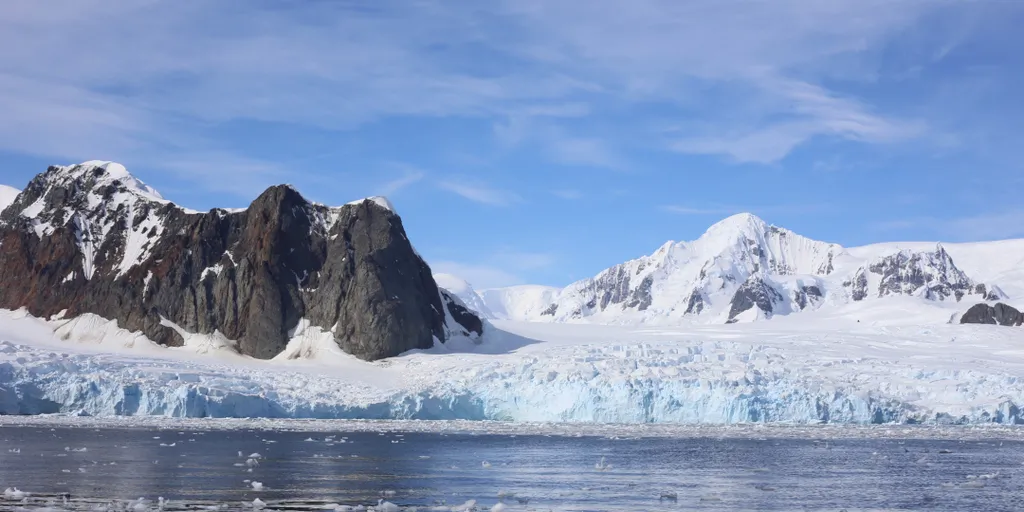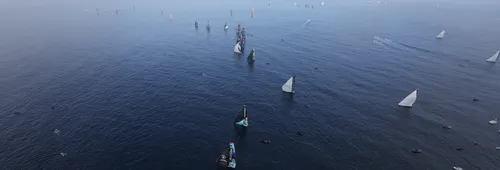Ice and shipping have not always gone well together in Antarctica. At the end of the 19th century (the era of the Cape Horners), a period of heavy calving - when a piece of ice breaks off a glacier - disrupted merchant traffic around the Southern Ocean. This was particularly true near Cape Horn in the summer of 1893-94. A large quantity of icebergs from the Amundsen Sea was drifting towards the Falklands, making passage risky. Navigation and safety at sea have improved considerably since then, we have satellites. For the Vendée Globe, the French company CLS is monitoring the ice from space and defining an Antarctic exclusion zone, commonly known as the AEZ, taking into account the position of the icebergs and their drift linked to currents. In the near future, an abnormal quantity of icebergs could well resurface in the ocean, this time impacting on sea levels and coastal erosion.
Halfway through this century, sea levels are expected to rise by 20 centimetres, according to the French space agency and NASA. Behind this figure lie billions of tonnes of ice breaking off the continents every year. In Antarctica, the glaciers that reach down to the water float and form platforms hanging onto the coast. These platforms, several hundred metres thick, slow down the flow of ice from the continent, somewhat like a cork in a bottle.
At a certain stage of global warming, ocean currents destabilise these platforms. "An ice shelf can disintegrate in a few weeks and form a large number of icebergs in one go," explains Nicolas Jourdain, a glaciologist at the Institute of Environmental Geosciences at the University of Grenoble. "Like Larsen B in 2002, in the east of the Antarctic Peninsula." And when you pop the cork in a bottle, it flows faster.
Since 1995, the flow of ice has accelerated by 26% on the Antarctic Peninsula. This tip is located in the west of the continent, where melting has already contributed to 10% of the rise in the general level of the oceans (nine centimetres since 1993). "In the Amundsen Sea, the Pine Island and Thwaites ice shelves are already severely damaged and could disintegrate by 2050," explains the glaciologist, "but the phenomenon is exceptional and very difficult to predict."
These events will still be very localised between now and 2050, but if no effort is made to limit global warming, they could become widespread by 2100. Thwaites alone contains enough ice to cause 65 centimetres of sea level rise. There is enough ice in Antarctica and the Arctic to raise the ocean by 70 metres and 6 metres respectively. Depending on climate scenarios and calculations, sea levels at the end of the century will be between one and five metres higher than the zero mark.
Sources :
- Headland, R.K., Hughes, N.E., Wilkinson, J.P., 2023. Historical occurrence of Antarctic icebergs within mercantile shipping routes and the exceptional events of the 1890s. Journal of Glaciology 1–13. https://doi.org/10.1017/jog.2023.80.
- Shepherd, A., and al., 2020. Mass balance of the Greenland Ice Sheet from 1992 to 2018. Nature 579, 233–239. https://doi.org/10.1038/s41586-019-1855-2.
- Hoffman, M.J., Asay-Davis, X., Price, S.F., Fyke, J., Perego, M., 2019. Effect of Subshelf Melt Variability on Sea Level Rise Contribution From Thwaites Glacier, Antarctica. Journal of Geophysical Research: Earth Surface 124, e2019JF005155. https://doi.org/10.1029/2019JF005155.
- NASA Analysis Sees Spike in 2023 Global Sea Level Due to El Niño - NASA https://www.nasa.gov/earth/oceans/nasa-analysis-sees-spike-in-2023-global-sea-level-due-to-el-nino.
- La fonte des glaces et l’élévation du niveau marin — Planet-Terre, https://planet-terre.ens-lyon.fr/ressource/fonte-des-glaces.xml.
- Intergovernmental Panel on Climate Change (IPCC), 2023. Climate Change 2021 – The Physical Science Basis: Working Group I Contribution to the Sixth Assessment Report of the Intergovernmental Panel on Climate Change. Cambridge University Press, Cambridge. https://doi.org/10.1017/9781009157896.




